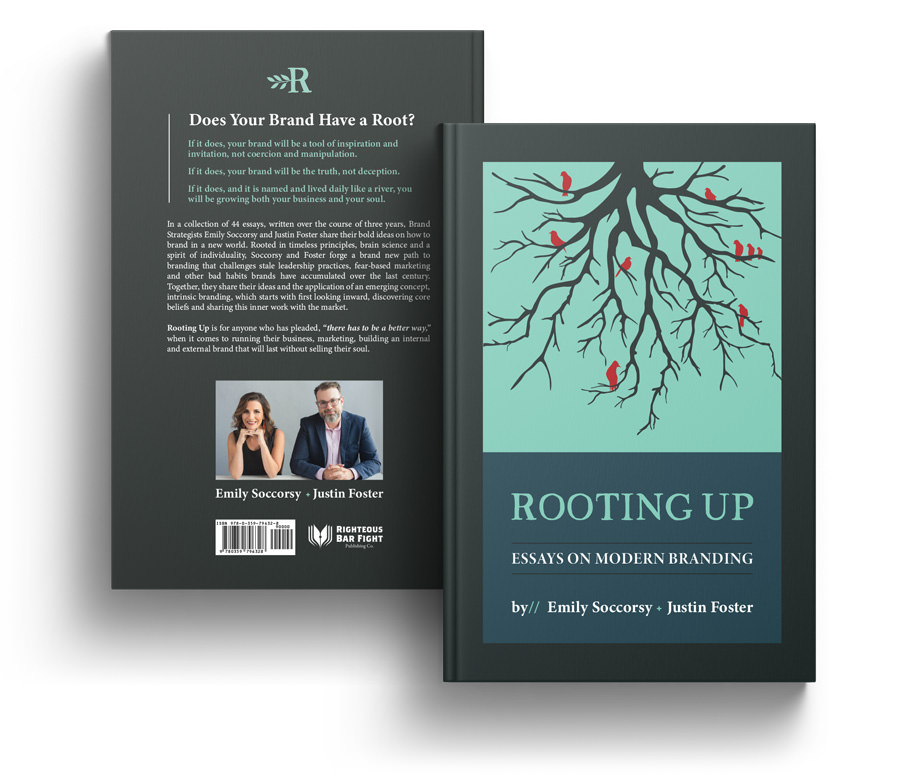Filed Under: 21st Century Branding
By Emily Soccorsy + Justin Foster
We’ve recently been working with a Fortune 50 company to help them communicate a critical business strategy that required some sensitivity and intentional language related to a change of service.
After we presented our simple, clear, heart-based messaging with which to communicate BOTH internally and externally, we received an interesting comment.
“My reaction is: sounds like marketing,” spat out a veteran corporate communicator in the meeting.
Hmmmm…..Well, it’s descriptive, it’s evocative and it’s direct. “Check, check, check,” we thought. “It is marketing. And what’s wrong with that?”
How else should you speak to your customers? Do you not have a relationship with them? Do you not need them in your life? Do you not want to be very, very close to them?
We don’t really blame that guy for feeling that way. Marketing has painfully earned it’s negative reputations. Marketing language too often used like a bad Tinder pick-up line and not an alluring invitation to get to know someone better.
Marketing by it’s purest nature is a form of intimacy. It is the language of love, not the language of temporary romance or a long-term relationship gone stale. Real marketing is not a flashy come-on or the mundane activity that you negotiate over. It is part of the daily rhythm of a relationship between your brand and the people it touches.
You used marketing to woo people to begin a relationship with you and become your customers. Once they become customers, you stop marketing to them and start managing them. Instead of continuing to woo them with love language, you send them legalese about the end of a contract or a notice of a policy change. Or maybe worst of all, you send them a three-page ratings based survey! Would you ever say after an intimate moment, “On a scale of 1-10, how was that for you?” Of course not!
So here are some specific tips you can use to keep the magic alive with your customers with some provocative, intimate language:
- Instead of sending out traditional “satisfaction” surveys, simply ask them questions like “Are you happy?” or “What can we do to make your life better?” Not only will this give you a deeper connection with your customers, it will also provide tons of useful ideas.
- Instead of talking about what you want them to do, start thinking about the conditions they face, then figure out if you have anything to improve those conditions. If the answer is yes, directly tell them about it — starting by relating to how they must be feeling.
- Offer your current customers better deals, new products, free stuff before you offer these to new customers. It has been proven over and over again that customer retention has a much, much higher ROI than customer acquisition.
- Call them by their names. You have a database of their names. Use it every chance you get! Hearing one’s name has a powerful impact. In a recent study by a human behavioral company we worked with, they found the brain was most impacted when subjects saw or heard their own name.
If you want to keep the magic alive in this relationship (which keeps them attached to your brand, and an active brand advocate), think of your communication with them as a way to express your love, concern and appreciation for all they are. If you read communication copy that you would not dare utter to your partner, do not send it to your customers.
Bottom-line: stop taking conversations with your customers for granted. Stop treating them as an accessory to your business model and start treating them like true partners. Spice it up.
Emily Soccorsy + Justin Foster are cofounders of the intrinsic branding practice known as Root + River. Together with their defiantly different clients, they uncover then articulate the foundational elements of the brand. Then, they provide brand strategy and brand coaching as the brand is rolled out internally and externally. Obsessive about language and differentiation, Emily + Justin are also authors and speakers. Follow @rootandriver @fosterthinking and @emilyatlarge.
